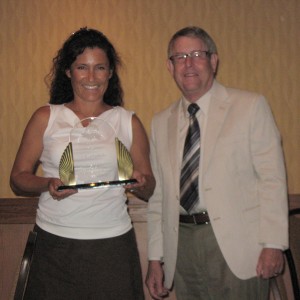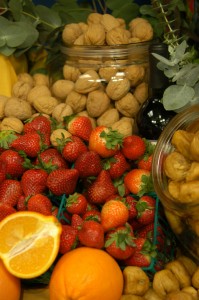-
Recent Posts
- CDFA Insect Pavilion brings biodiversity and bugs to the 2025 California State Fair
- California State Fair Honors Generations of Agricultural Legacy with 2025 Ag Heritage Awards
- Lowering the boom on illegal fireworks — CDFA teamed up with San Bernardino County Fire to confiscate 13 tons prior to July 4th
- $600 million for CDFA in new budget year
- A Pride Month Conversation with Cody Nicholson Stratton, of Foggy Bottoms Boys Farms
Recent Comments
- William Griffin on Lowering the boom on illegal fireworks — CDFA teamed up with San Bernardino County Fire to confiscate 13 tons prior to July 4th
- Yvonne McCurley on A Pride Month Conversation with Cody Nicholson Stratton, of Foggy Bottoms Boys Farms
- Diana Shima on A Pride Month Conversation with Cody Nicholson Stratton, of Foggy Bottoms Boys Farms
- Andy on Experience California Agriculture — Secretary Ross applauds new agritourism website from California Grown
- EDWARD RING: Saving California’s rural water users ~ MAVEN'S NOTEBOOK | California Water News Central on Nine California Counties Make Top-10 List for Ag Sales in the U.S.
Archives
- July 2025
- June 2025
- May 2025
- April 2025
- March 2025
- February 2025
- January 2025
- December 2024
- November 2024
- October 2024
- September 2024
- August 2024
- July 2024
- June 2024
- May 2024
- April 2024
- March 2024
- February 2024
- January 2024
- December 2023
- November 2023
- October 2023
- September 2023
- August 2023
- July 2023
- June 2023
- May 2023
- April 2023
- March 2023
- February 2023
- January 2023
- December 2022
- November 2022
- October 2022
- September 2022
- August 2022
- July 2022
- June 2022
- May 2022
- April 2022
- March 2022
- February 2022
- January 2022
- December 2021
- November 2021
- October 2021
- September 2021
- August 2021
- July 2021
- June 2021
- May 2021
- April 2021
- March 2021
- February 2021
- January 2021
- December 2020
- November 2020
- October 2020
- September 2020
- August 2020
- July 2020
- June 2020
- May 2020
- April 2020
- March 2020
- February 2020
- January 2020
- December 2019
- November 2019
- October 2019
- September 2019
- August 2019
- July 2019
- June 2019
- May 2019
- April 2019
- March 2019
- February 2019
- January 2019
- December 2018
- November 2018
- October 2018
- September 2018
- August 2018
- July 2018
- June 2018
- May 2018
- April 2018
- March 2018
- February 2018
- January 2018
- December 2017
- November 2017
- October 2017
- September 2017
- August 2017
- July 2017
- June 2017
- May 2017
- April 2017
- March 2017
- February 2017
- January 2017
- December 2016
- November 2016
- October 2016
- September 2016
- August 2016
- July 2016
- June 2016
- May 2016
- April 2016
- March 2016
- February 2016
- January 2016
- December 2015
- November 2015
- October 2015
- September 2015
- August 2015
- July 2015
- June 2015
- May 2015
- April 2015
- March 2015
- February 2015
- January 2015
- December 2014
- November 2014
- October 2014
- September 2014
- August 2014
- July 2014
- June 2014
- May 2014
- April 2014
- March 2014
- February 2014
- January 2014
- December 2013
- November 2013
- October 2013
- September 2013
- August 2013
- July 2013
- June 2013
- May 2013
- April 2013
- March 2013
- February 2013
- January 2013
- December 2012
- November 2012
- October 2012
- September 2012
- August 2012
- July 2012
- June 2012
- May 2012
- April 2012
- March 2012
- February 2012
- January 2012
- December 2011
- November 2011
- October 2011
- September 2011
- August 2011
- July 2011
- June 2011
Categories
- AG Vision
- Agricultural Education
- Agricultural Marketing
- Alternative Fuels
- Animal health
- Animal Welfare
- Asian Citrus Psyllid
- Biodiversity
- Border stations
- BSE
- Cannabis
- Cannella Panel
- Climate Change
- Climate Smart Agriculture
- Community-based Food System
- Conservation
- Dairy
- Drought
- Environment
- Fairs
- Farm Bill
- Farm Labor
- Farmers' Markets
- Fertilizer
- Food Access
- Food Safety
- Food Waste
- Glassy-winged Sharpshooter
- Growing California
- Healthy soils
- HLB
- Hydrogen
- Integrated Pest Management (IPM)
- Invasive Species
- Light Brown Apple Moth
- Livestock ID
- Measurement Standards
- Nutrition
- Organic agriculture
- Pierce's Disease
- Pollinators
- Specialty Crops
- State Board of Food and Agriculture
- Succession Planning
- Trade
- Uncategorized
Pages
RSS

TV Report: Pesticide Residue Testing at Farmers’ Markets
Bay Area NBC station KNTV aired a report this week that followed several fruit and vegetable samples from a local farmers’ market to CDFA’s lab, where analysts check for pesticide residues. See the report online at http://www.nbcbayarea.com/news/business/Farmers_Market_Inspections_Bay_Area-129888613.html
Posted in Environment, Farmers' Markets, Food Safety
Tagged Farmers' Markets, Pesticide Residue Testing
Leave a comment
Joint biofuel forum scheduled with California Energy Commission
The staff of the California Department of Food and Agriculture and the California Energy Commission will conduct a public forum to facilitate information exchange on agriculture business and the biofuel industry. Thursday, September 22, 2011 at 9 am at CDFA. Meeting notice….
Posted in Uncategorized
Leave a comment
Oriental fruit fly infestation in Stockton will trigger quarantine
The California Department of Food and Agriculture is preparing for quarantine and eradication measures in response to the Oriental fruit fly (OFF) infestation detected in the Stockton Area of San Joaquin County.
“Our statewide array of pest traps has worked precisely as designed,” said CDFA Secretary Karen Ross. “In cooperation with local agricultural commissioner’s offices, we set and check traps daily across the state to detect these infestations when they are still small, enabling a focused, fast response. We already have crews on the ground preparing for a quarantine and working to eradicate the infestation.”
The first two OFFs were detected in a trap in the Stockton area on Thursday, September 8, prompting crews to increase the trapping density in the region over the weekend. The additional traps have since picked up enough flies to confirm the presence of a breeding population and trigger preparations for a quarantine.
The quarantine will restrict the movement of crops, plants and related materials that could harbor or spread the OFF. Quarantine boundaries and specific restrictions will be formally announced once agricultural officials have analyzed trapping results and determined the extent of the infested area. Crews have already begun notifying growers, nursery owners and other agriculture-related businesses of the pending quarantine.
Eradication efforts are already underway – beginning with a larval survey in which crews pick and cut into host fruits and vegetables within 200 meters of the sites where OFFs were trapped, as well as treatment of trees and plants on properties within 200 meters with the organic-approved product spinosad.
Following the principles of integrated pest management, CDFA uses “male attractant” treatment as the mainstay of its eradication measures for this pest. This approach has successfully eliminated dozens of fruit fly infestations from California since the 1970s. Workers squirt a small patch of fly attractant mixed with a very small dose of pesticide approximately 8-10 feet off the ground on street trees and similar surfaces; male flies are attracted to the mixture and die after consuming it. Preparations are underway to begin this phase of the response. The male attractant treatment program will be carried out over several square miles surrounding the sites where the insects were trapped.
Eradication activities may also include removal of susceptible host fruit and vegetables within 100 meters of the infested sites. Residents’ questions about the program may be directed to CDFA’s Pest Hotline, 1-800-491-1899. Stockton residents who have fruit trees are also encouraged to call to report any maggots that they find in backyard fruit, and to refrain from moving homegrown fruit off of their property or giving it away. Homegrown fruit may be consumed or processed (canned, juiced, etc.) on-site.
The Oriental fruit fly is known to target over 230 different fruit, vegetable and plant commodities. Damage occurs when the female lays eggs inside the fruit. The eggs hatch into maggots that tunnel through the flesh of the fruit, making it unfit for consumption.
While fruit flies and other pests that threaten California’s crops are sometimes detected in agricultural areas, the vast majority are found in urban and suburban communities. The most common pathway for these pests to enter the state is by “hitchhiking” in fruits and vegetables brought back illegally by travelers as they return from infested regions around the world. The OFF is widespread throughout much of the mainland of Southern Asia and neighboring islands including Sri Lanka and Taiwan. It is also found in Hawaii.
Posted in Uncategorized
Tagged food security, fruit flies, invasive species, quarantine
Leave a comment
Celebrating Excellence: Citrus Research Board honors CDFA’s Tina Galindo
In my time at CDFA, and in the years before that when I worked cooperatively with the agency as a member of the agricultural industry, I’ve come across many accomplished, truly outstanding public servants. So many people quietly dedicate their careers to serving California’s farmers, ranchers and consumers. That’s why, whenever I see an opportunity to celebrate and recognize our employees’ achievements, I welcome the chance.
CDFA’s Tina Galindo is an “Agricultural Program Supervisor IV,” which means she’s in charge of making sure a lot of people, equipment, supplies and effort come together in just the right order at just the right time so that our crews can find and respond to pest infestations in urban areas, mostly in Southern California. It’s hard work, it’s demanding, and Tina gets it done. Lately, much of her workload has been in response to the Asian citrus psyllid (ACP) infestations in our urban communities (more on the ACP effort: http://www.cdfa.ca.gov/phpps/acp/). Her efforts have not gone unnoticed by the farmers whose fields she is protecting.
Citrus Research Board (CRB) President Ted Batkin recently invited Tina and her family to an event for the presentation of the CRB’s President’s Award, which honors people outside the research community who have contributed significantly to the CRB and the citrus industry. Ted credits Tina with “going well beyond the scope of her job responsibilities” and being “dedicated to personal and professional excellence.” Her staff and supervisors here at CDFA couldn’t agree more.
Tina, thank you for all you do – and congratulations to you and your crew for earning this honor.
Posted in Asian Citrus Psyllid
Tagged Asian Citrus Psyllid, Citrus Research Board, Ted Batkin, Tina Galindo
Leave a comment
Finding Agriculture Everywhere
Here’s a game for your next car trip: Name something you see, and see if your kids can link that object to a farmer. For starters: orange tree, landscaping plants… Then houses (wood, carpets…), cars (fabrics, resins, polymers, adhesives, biofuels…) and road signs (paint pigments, poles). How about the lowly water bottle there in the cupholder? More and more of those are made with plant-based plastics.
Continue the game when you get home. Curtains, picture frames, furniture, all made with wood or fiber from trees and plants. A sofa made of leather. Wallpaper. Hardwood floors. Medicines and makeup often include plant extracts.
There are lots of fun facts out there about agriculture. CDFA has a large selection on its kids’ page: http://www.cdfa.ca.gov/kids/, available to kids of all ages. The Agriculture in the Classroom program has a great map allowing people to click on each state for a summary of what makes farming great: http://www.agclassroom.org/kids/ag_facts.htm
So, what did we learn today, class? It’s easy to link farmers to food, but agriculture is much more than that. Which brings us to the real question: if the fake plant in your office window is made of plant-based plastic, is it really “fake?”
Governor Brown joins Secretary Ross at Yolo County Land Trust “Day in the Country” event
Yesterday I participated as a “celebrity chef” at The Yolo Land Trust’s “Day in the Country” annual fundraiser. It was their largest and most successful one ever. I had a chance to offer some remarks where I thanked attendees for their support. We were there to celebrate the bounty of Yolo County agriculture and Yolo County as a leader\model for building community, bridging rural-urban interests, and preserving working ag lands as a legacy so that future generations can enjoy the bounty and quality of life we celebrated yesterday. The cool thing was that Governor Brown was a surprise drop-by guest!
Paul Muller of Full Belly Farms, a leader in CDFA’s Ag Vision program, was honored for his years of dedicated service to the land trust, including starting the Day in the Country event, which is a fabulous opportunity to sample Yolo County wines and tasty tidbits from Northern California’s talented chefs — all of whom source products from Full Belly Farms and other Yolo County farmers and ranchers.
Preserving ag land is key to expanding ag exports around the world and ensuring we can build robust local and regional food systems.
Posted in Agricultural Education
1 Comment
50th Annual Harvest Luncheon in Modesto
Today, I had the opportunity to speak at the 50th annual Harvest Luncheon in Modesto. This is a great cause. The money raised goes to fund scholarships for Ag students – the next generation of agricultural leaders in California. I wish to congratulate the Modesto Chamber of Commerce and the people of Stanislaus County for their commitment to education, to agriculture, and to community.
I always enjoy my visits to Stanislaus County because it’s hallowed ground. Previous CDFA secretaries Bill Lyons, Henry Voss and Clare Berryhill hailed from there, as did Dick Lyng, who served as CDFA deputy director and secretary before his appointment as head of USDA, and Ann Veneman, who also led both CDFA and the USDA. Stanislaus County is truly a special place for agriculture.
USDA Report Shows More Than 17 million American Households Lack Food Security
WASHINGTON, Sept. 7, 2011 — USDA Food, Nutrition and Consumer Services Under Secretary Kevin Concannon today announced the results of USDA’s Household Food Security in the United States, 2010 report that found that the percentage of very low food security declined from 5.7 percent of households in 2009 to 5.4 percent in 2010. The USDA study indicated that in 2010, 17.2 million households in America had difficulty providing enough food due to a lack of resources. The number of food insecure households in 2010 was relatively consistent with statistics released in 2008 and 2009.
“This report underscores the critical role that federal nutrition assistance programs play in helping struggling American families put food on the table until they can get back on their feet,” said Concannon. “Many families receive assistance not because they want to, but because they need it as a last resort to make ends meet. As the economy continues to recover and jobs are created, we hope to see the number of families in need of nutrition assistance shrink.”
The report released today indicates that 59 percent of all food-insecure households participated in one or more of the three largest nutrition assistance programs near the time of the survey.
In fiscal year 2010, these programs provided much needed food assistance to millions of individuals, children and families in need:
- In an average month of fiscal year 2010 (October 1, 2009 through September 30, 2010), the Supplemental Nutrition Assistance Program (SNAP) provided benefits to 40.3 million people in the United States.
- In fiscal year 2010, the National School Lunch Program (NSLP) provided meals to an average of 31.6 million children each school day.
- In fiscal year 2010, the Special Supplemental Nutrition Program for Women, Infants and Children (WIC) served an average 9.2 million participants per month.
Food insecurity rates were substantially higher than the national average for households with incomes near or below the current federal poverty line ($22,350 for a family of four), households with children headed by single women or single men, and black and Hispanic households. Food insecurity was more common in large cities and rural areas than in suburban areas and other outlying areas around large cities. The media briefing kit can be obtained at http://www.ers.usda.gov/Features/HouseholdFoodSecurity2010/.
USDA’s Food and Nutrition Service administers 15 nutrition assistance programs including the Summer Food Service Program; SNAP; NSLP; WIC; and the Emergency Food Assistance Program. Together these programs make up the federal nutrition safety net. USDA administers these programs in partnership with state and local agencies and works with faith and community-based organizations to ensure that nutrition assistance is available to those in need. Additional information about the programs can be found at www.fns.usda.gov.
Posted in Uncategorized
Leave a comment
First Asian Crop Harvest Festival Opportunity to Celebrate Heritage
One of the most remarkable things about our state and nation remains the opportunities available to immigrants. Even now, in the midst of recession, there are new Americans pursuing their dreams, just like many millions before them. In agriculture, many of them are farmers, and some are seeking their niche by growing the crops of their homelands.
I recently had an opportunity to visit Cherta Farms in Fresno County. The CEO, Tzeka Cherta Lee, is a first generation Hmong immigrant who began farming to put himself through school. He received a master’s degree in anthropology and returned to the farm full-time, where he and others are working to make Asian crop farming sustainable. We all stand to benefit if they succeed.
Asian vegetables are delicious, nutritious, and grown right here in California. The farmers I met at Cherta Farms are working together to promote these commodities with the first annual Asian Crop Harvest Festival, scheduled for September 16th and 17th at Manchester Mall in Fresno.
What better way to learn about Asian vegetables? I hope you will attend, and give a boost however you can to the hard-working Americans producing these crops.
Posted in Uncategorized
Leave a comment
Wisconsin study finds big dairies produce cleaner milk
http://www.sfgate.com/cgi-bin/article.cgi?f=/n/a/2011/09/05/national/a002547D48.DTL
By DINESH RAMDE, Associated Press
Monday, September 5, 2011
(09-05) 00:25 PDT MILWAUKEE (AP) —
With buying from small, local, family-run farms becoming more popular, the results of a new study from Wisconsin could be surprising: It found that milk from big dairies is cleaner than that from small ones.
The lead researcher was Steve Ingham, a former University of Wisconsin-Madison professor who now works for the state agriculture department. He says he looked at cell and bacteria levels use to evaluate a cow’s health and a farm’s cleanliness and found them lower in milk from big farms.
All the farms met federal safety standards.
Wisconsin Farmers Union spokesman Tom Quinn dismissed the results, saying a truly meaningful study of milk quality would have to evaluate factors like taste and nutrition.
The study was published last month in the Journal of Dairy Science.
Posted in Uncategorized
1 Comment








